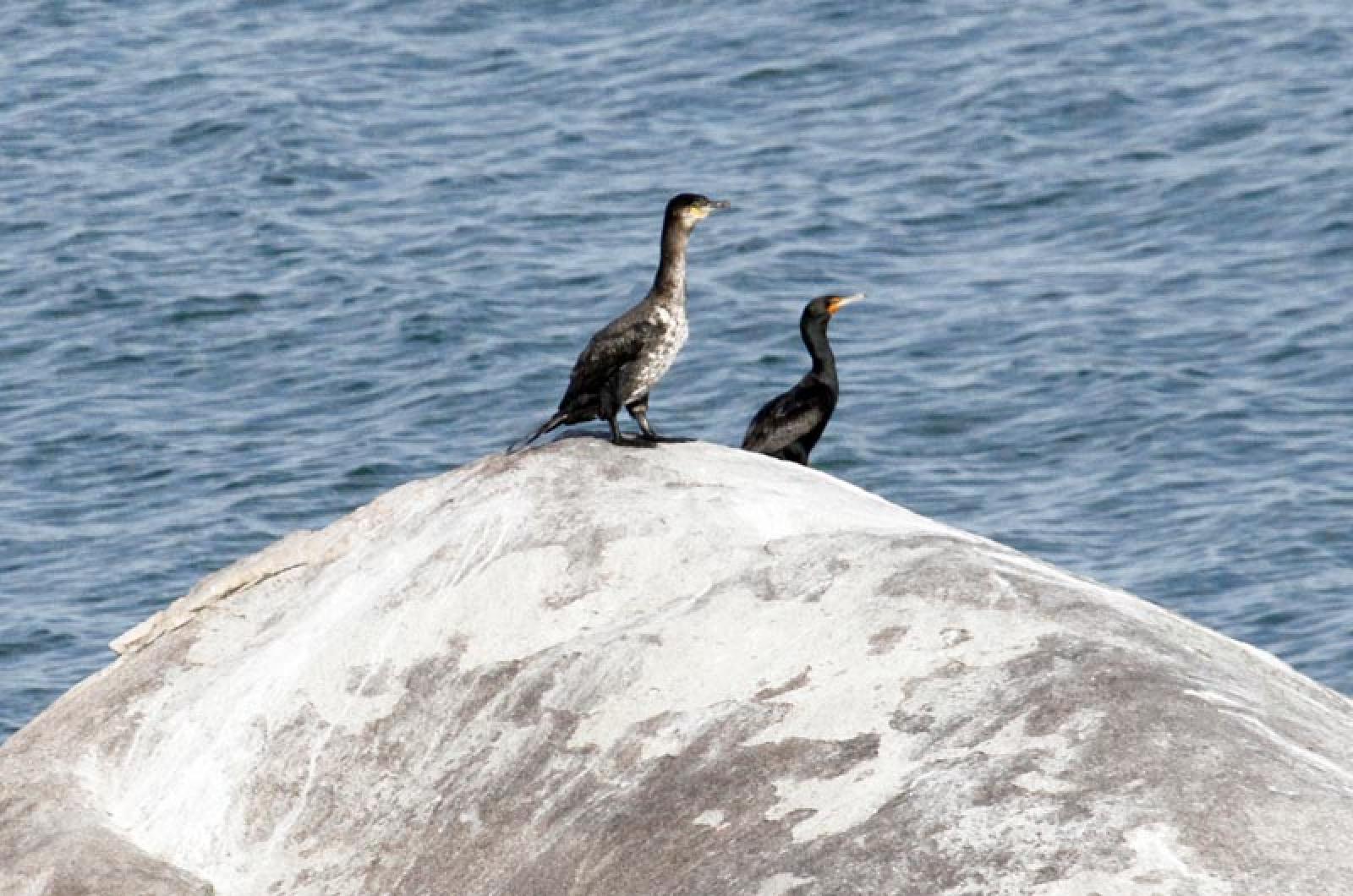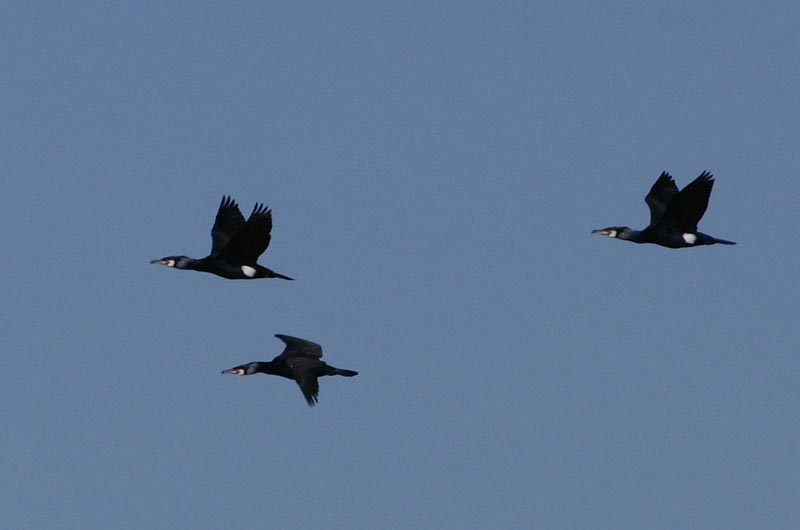Phalacrocorax carbo (pronounced fal-ah-crow-koh-rack) is the Latin name for the largest of a group of birds that are not well liked: the cormorants. The great cormorant’s Latin name loosely translated means “bald coal-colored crow.” This largest of the cormorant family comes primarily from Europe but is also found on the East Coast of the United States. Originally found in the northern climes of eastern Canada, the great cormorant’s distribution has changed. Not only does this cormorant now spend its winters in New England, but it also has been seen wintering as far south as South Carolina.
Known also as shag, this cormorant used to nest only in far northeastern Canada in this continent. Now there are records of this species nesting in New England, primarily in Maine although there is one record of a pair of great cormorants nesting on the Weekpecket Islands, which are part of the neighboring Elizabeth Islands.
The great cormorant, with a wingspan of 63 inches, is larger than our common double-crested cormorant (wingspan of 52 inches). When perching, which is what both these species do frequently, the great cormorant stands three inches taller than the double-crested cormorant. During the fall, early winter and late spring the identification of these two species is difficult if you don’t see them together.
The adult breeding plumage of the great cormorant is coal black with a white throat and hip patch and yellowish chin or gular pouch. In contrast, the double-crested cormorant is black with a greenish sheen and an orange chin or gular pouch. Sounds easy but it is not. You might notice the great cormorant has a block-shaped head while the double-crested is rounder, but it’s still tough unless the two species are together. Now to make things worse, the immatures are a bit confusing. The great cormorant has a gray neck and breast, followed by a white belly and a slight white patch behind the yellow chin. The double-crested cormorant has an all gray neck, breast and belly. If the light isn’t just right . . . well, you try it.
Normally the great cormorant has left the Vineyard by now to head north to its nesting grounds, which are on cliffs and ledges. However, on June 22, Lanny McDowell was able to take a photo of both great and double-crested cormorants on a rock off the beach at Great Rock Bite in Chilmark. What a great way to learn the differences between these two species.
The reason cormorants are not particularly well liked stems from this bird’s voracious appetite for fish. An efficient fisherman, the cormorants use their totipalmate (webbed between all four toes) feet for propulsion and squeeze their wings tightly against their bodies. They can swiftly dive to 10 feet and as deep as 30 feet in pursuit of prey. Often feeding with a flock of other cormorants, these birds can wipe out a school of fish in jig time. The fish consumed include haddock, cod, flounder, herring, bluefish, bass and an occasional eel or two. So if you were a fisherman or an osprey, would you like to compete with a flock of cormorants?
The best way to see one of the cormorant species is to find a jetty or rock pile where the birds are out and hanging their wings out to dry. The cormorant’s feathers are easily waterlogged, which helps them sink low in the water so they can stick their heads underwater to spy fish. However, once done fishing, the cormorants do not swim around; they get out to dry their wings.
Cormorants are long-lived species and can live between eight and 13 years, with one record of a 23 year old! They are attentive parents as both feed the chicks, and in hot weather they actually fill their gular pouches and crops with water and give their nestlings a shower to cool them off!
Bird Sightings
Flip Harrington and I spotted our first great blue heron of the season on Big Sandy in Tisbury Great Pond on June 24.
Tara Whiting was awakened by a belted kingfisher that brought her a small fish for breakfast. The kingfisher perched on the porch railing just five feet from her bedroom window on Tisbury Great Pond on June 24. Next door we had heard the kingfisher but had not seen it or been offered a fish!
Sarah Mayhew has attracted quite a menagerie of birds at her West Tisbury hummingbird feeder in the last 10 days: a ruby-throated hummingbird, a Baltimore oriole, a gray catbird, and, of all things, a downy woodpecker. Must be a good mix!
Karen Stanley heard a whippoorwill calling behind the youth hostel in West Tisbury during the last three weeks.
Portlandica plumage common and least terns were still being seen and photographed by Jeff Bernier and Lanny McDowell at Norton Point last week.
Patrick Mitchell called to report seeing an American woodcock on North Slope Lane in Chilmark, not once but twice last week.
Dick Jennings, while surveying the osprey pole on Oyster Pond Road, watched an American woodcock cross the road on June 21 — no doubt to get to the other side!
Jonathan Mayhew called last week saying he was observing a strange black bird with a heavy orangish bill. I suggested several options and Jonathan didn’t agree. Then I saw an email from Lanny McDowell saying that a tufted puffin (a West Coast puffin) had been seen for the first time in years on the East Coast in the Bay of Fundy. Flip Harrington and I took his boat up into Clam Cove and around Quitsa and Menemsha Pond, but never found the bird. We will never know!
Please report your bird sightings to birds@mvgazette.com.
Susan B. Whiting is the co-author of Vineyard Birds and Vineyard Birds II. Her website is vineyardbirds2.com.








Comments (3)
Comments
Comment policy »